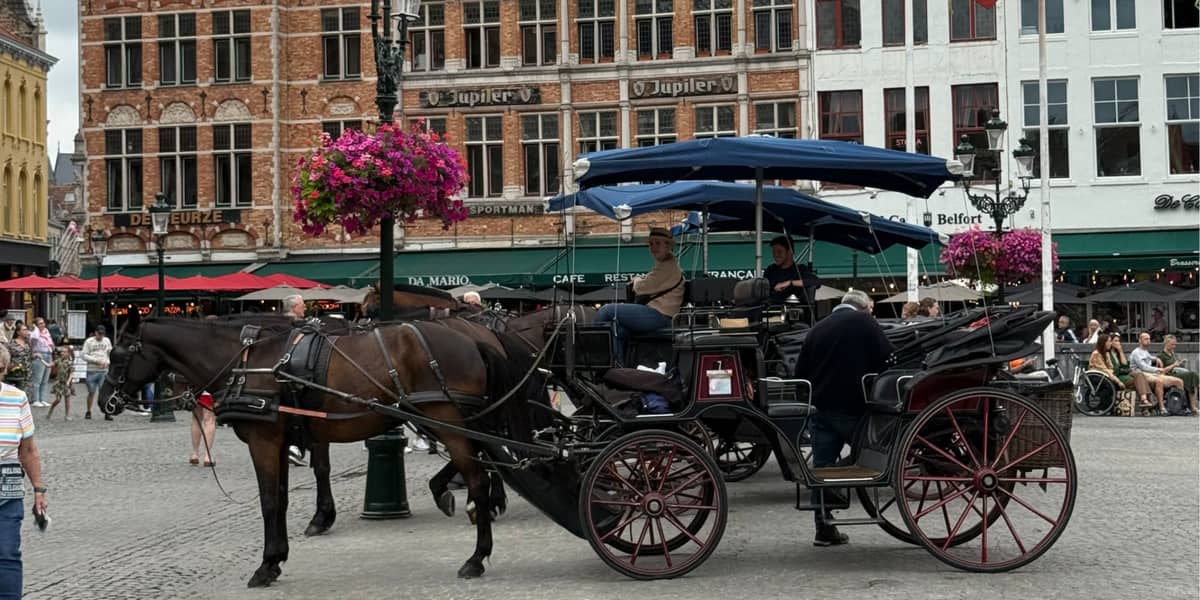“You guys should definitely visit Belgium, it’s very close by and so beautiful!” My friend texted me when I was holidaying in Paris in 2023. But considering the suggestion was sent on our last day of the trip, we couldn’t visit Belgium then. “Next time, definitely!” was my reply to him. The next time arrived in 2025, when I took a break again. During my recent trip to Belgium, I discovered how well the country is connected by train. In an hour or couple of hours one can go from experiencing medieval romance to political grandeur to canal-side calm. Antwerp, Bruges, Ghent and Brussels were my pitstops and each city had a distinct chapter of Belgium to tell and together they created a tapestry of experiences that created a lasting impression on me. I realised that Belgium might be a small country on the map but it’s blessed with a rare charm of being many worlds in one.
Antwerp
One would usually visit Antwerp last, but considering I was attending Tomorrowland music festival in Boom, I started with the vibrant, stylish and unapologetically bold city that is also known as the city of diamonds and Rubens’s baroque masterpieces. The Cathedral of Our Lady rises dramatically above the square, guarding Rubens’s famed altarpieces, while Antwerp’s Grote Markt dazzles with its Brabo Fountain and Renaissance Town Hall, but beyond the historic centre, you’ll find trendy neighborhoods buzzing with creativity.
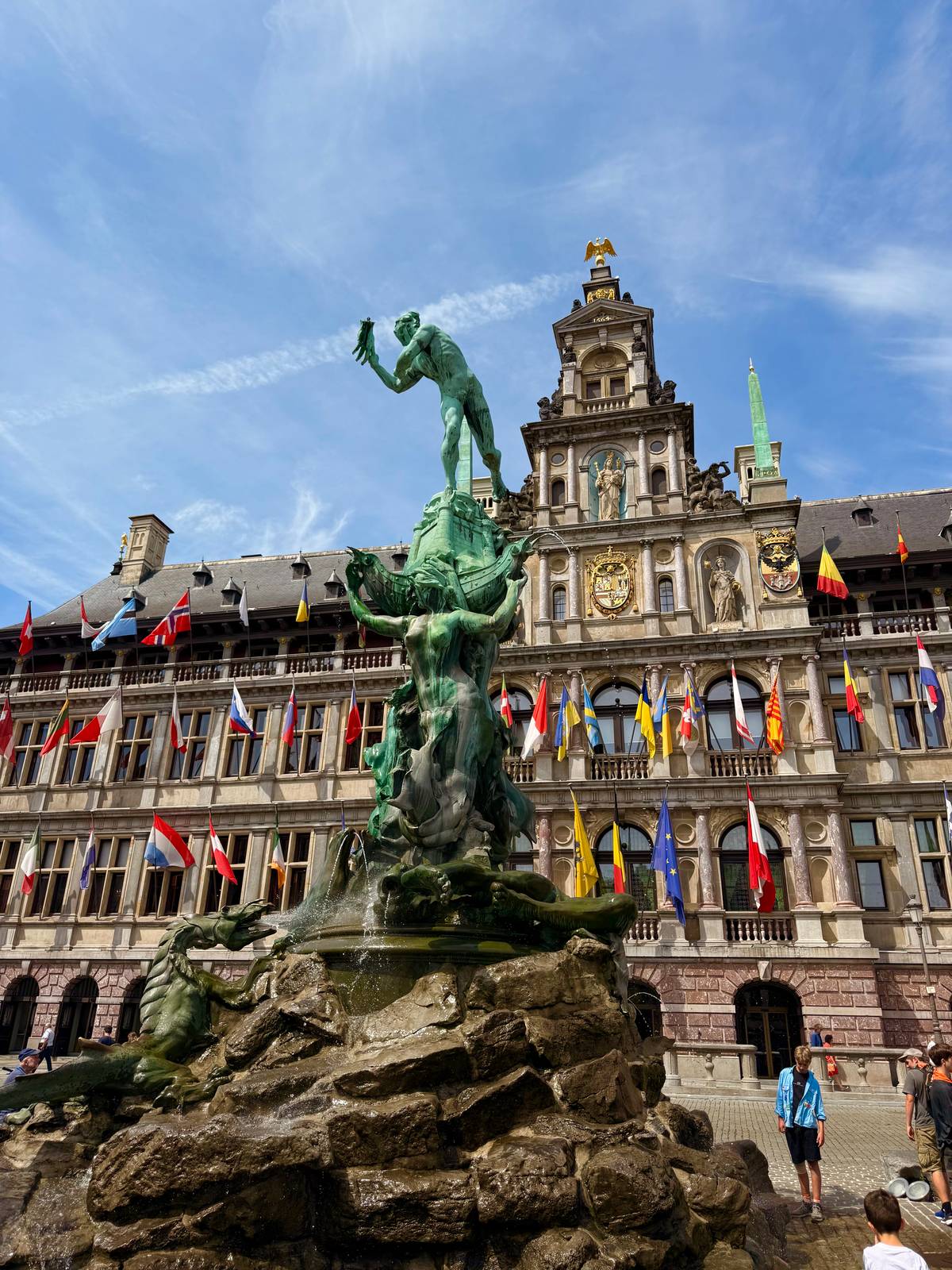 At the heart of Antwerp’s Grote Markt stands the iconic Brabo Fountain, one of the city’s most photographed landmarks. Sculpted by Jef Lambeaux, it depicts the Roman hero Brabo flinging the severed hand of the giant Antigone into the Scheldt — a legend said to inspire Antwerp’s name. Nearby, the 16th-century Town Hall, designed by Cornelis Floris de Vriendt, blends traditional style with Renaissance influences. Recognised by Unesco in 1936, it remains the political centre of the city, with its restored ground floor now open to visitors.
At the heart of Antwerp’s Grote Markt stands the iconic Brabo Fountain, one of the city’s most photographed landmarks. Sculpted by Jef Lambeaux, it depicts the Roman hero Brabo flinging the severed hand of the giant Antigone into the Scheldt — a legend said to inspire Antwerp’s name. Nearby, the 16th-century Town Hall, designed by Cornelis Floris de Vriendt, blends traditional style with Renaissance influences. Recognised by Unesco in 1936, it remains the political centre of the city, with its restored ground floor now open to visitors.
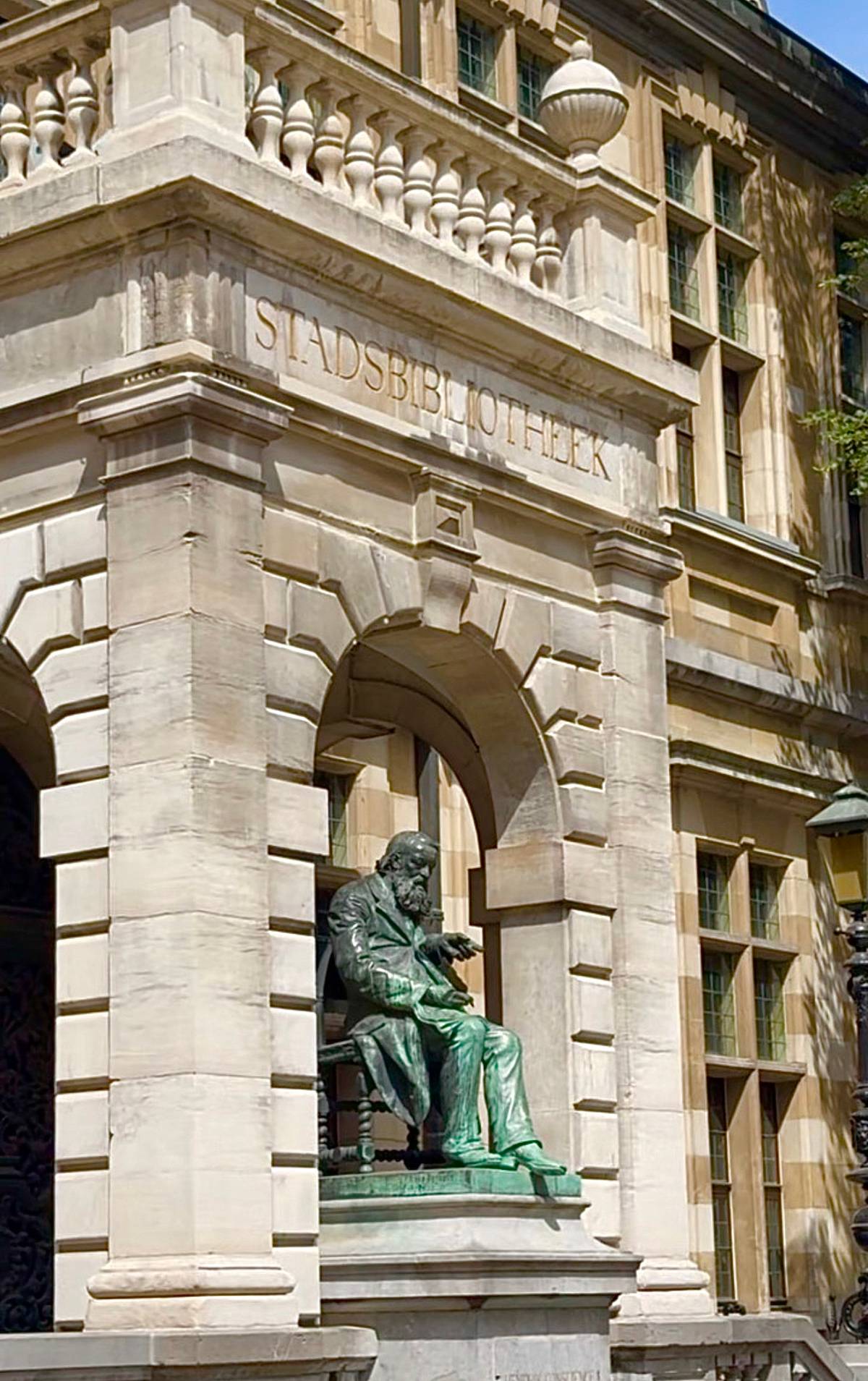 Once you start exploring, you will come across this bronze statue of famous Flemish writer Hendrik Conscience on Hendrik Conscienceplein, a square named after him. The statue was erected in 1883. Our guide informed us that the statue is a landmark because it pays tribute to the writer whose writing was considered vital in reviving Flemish language.
Once you start exploring, you will come across this bronze statue of famous Flemish writer Hendrik Conscience on Hendrik Conscienceplein, a square named after him. The statue was erected in 1883. Our guide informed us that the statue is a landmark because it pays tribute to the writer whose writing was considered vital in reviving Flemish language.
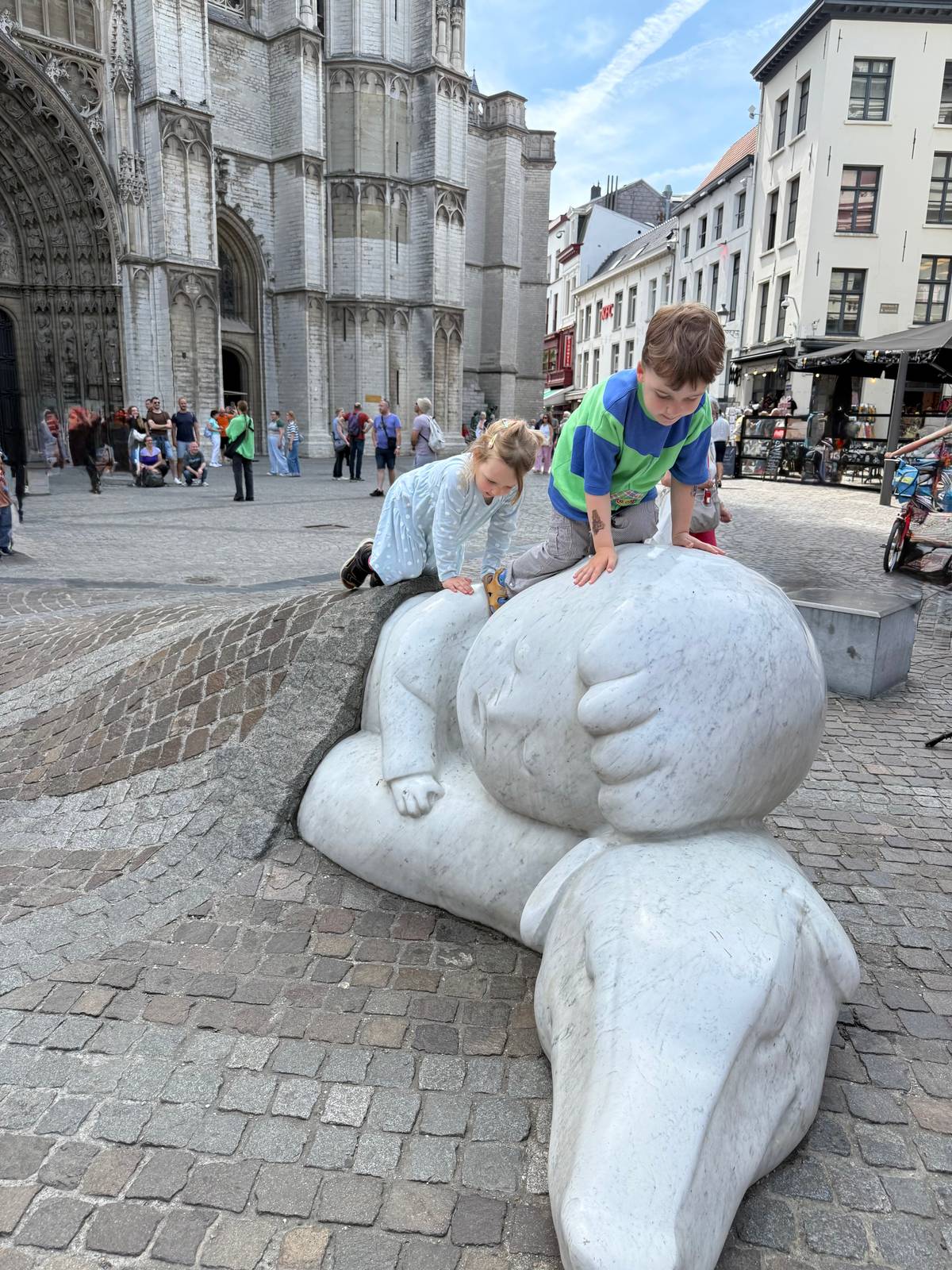 The statue of Nello & Patrasche (main characters in the 1872 novel A Dog of Flanders) lies at the foot of the Cathedral of Our Lady. The interesting statue might come across as a mere boy and a dog’s but its far more than that. In fact, as the story goes, it involves Nello, a poor orphan boy who befriends Patrasche, an abandoned cart dog, but through life’s different misfortunes, they both die together in the same cathedral. Post hearing the story that speaks about unconditional friendship, the statue hits different as you notice Nello is on top of Patrasche and both of them are wrapped with a blanket of cobblestones.
The statue of Nello & Patrasche (main characters in the 1872 novel A Dog of Flanders) lies at the foot of the Cathedral of Our Lady. The interesting statue might come across as a mere boy and a dog’s but its far more than that. In fact, as the story goes, it involves Nello, a poor orphan boy who befriends Patrasche, an abandoned cart dog, but through life’s different misfortunes, they both die together in the same cathedral. Post hearing the story that speaks about unconditional friendship, the statue hits different as you notice Nello is on top of Patrasche and both of them are wrapped with a blanket of cobblestones.
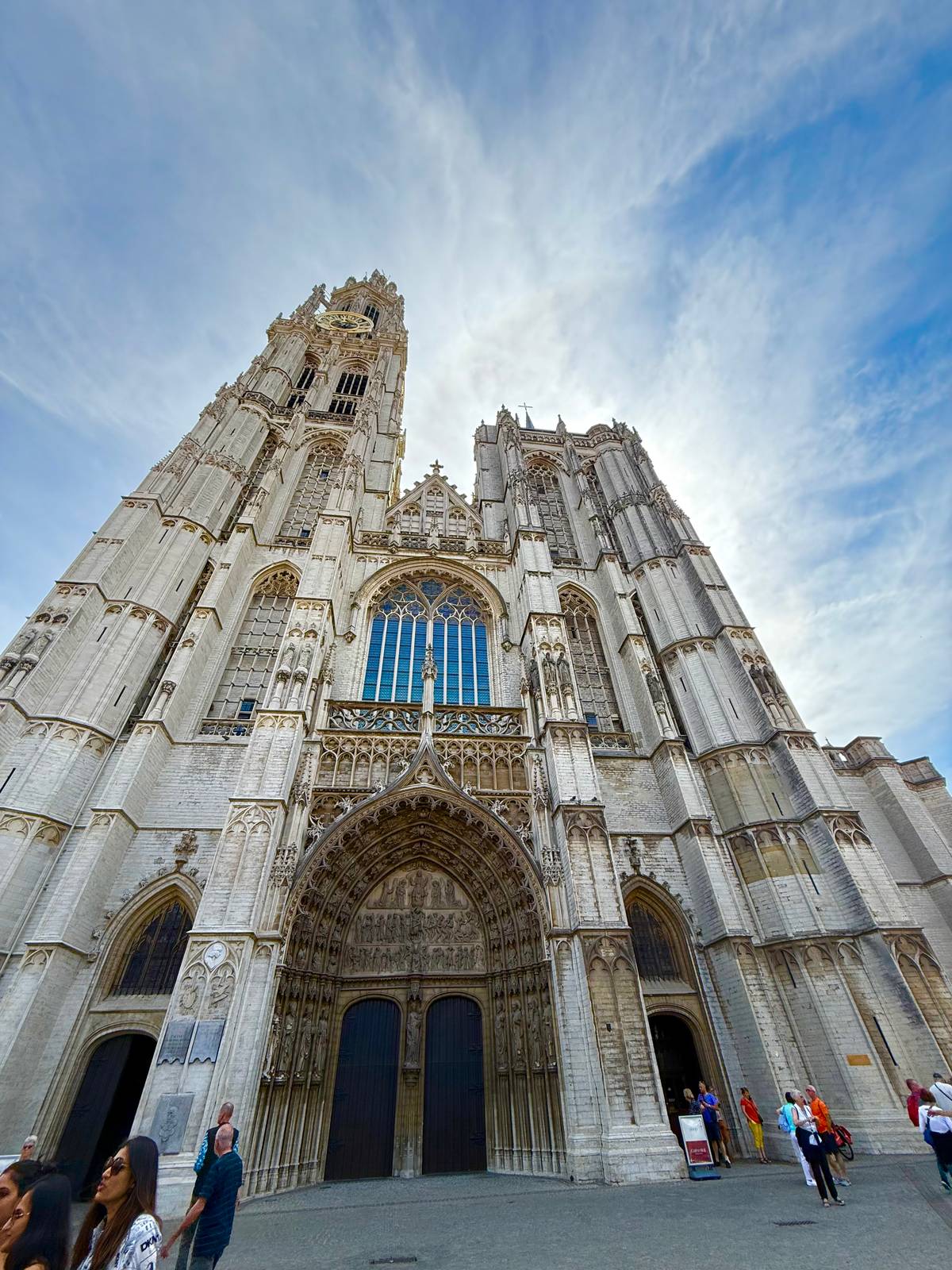 Cathedral of Our Lady, a World Heritage Site is a stunning gothic church in Antwerp. Standing on Handschoenmarkt beside Nello and Patrasche, you’ll see the majestic Gothic tower soaring 123m into the sky — a project that began in 1352 and took 170 years to complete. The beauty of the cathedral is stretches inside it too. You will be immersed in centuries of art and history: intricate stained-glass windows, ornate chapels and the striking naturalistic pulpit. The true highlights are the four masterpieces by Rubens, including The Elevation of the Cross and The Descent from the Cross.
Cathedral of Our Lady, a World Heritage Site is a stunning gothic church in Antwerp. Standing on Handschoenmarkt beside Nello and Patrasche, you’ll see the majestic Gothic tower soaring 123m into the sky — a project that began in 1352 and took 170 years to complete. The beauty of the cathedral is stretches inside it too. You will be immersed in centuries of art and history: intricate stained-glass windows, ornate chapels and the striking naturalistic pulpit. The true highlights are the four masterpieces by Rubens, including The Elevation of the Cross and The Descent from the Cross.
Bruges
After three hectic days of EDM and walking (30K steps a day!) at Tomorrowland, my heart and body craved some rest, some leisurely hour, and Bruges was just what I needed. A short train ride took me to one of the prettiest places I have ever been to. With its cobblestone streets, romantic canals and swan-dotted lakes, Bruges is a fairytale where time stands still and I indulged in the art of living the slow life. We spent three days, soaking in the charm and explored some of the must-visit places like Belfry of Bruges, Basilica of the Holy Blood, the pretty Rosary Quay and the delicious and insightful museum of chocolate at our own pace without rushing.
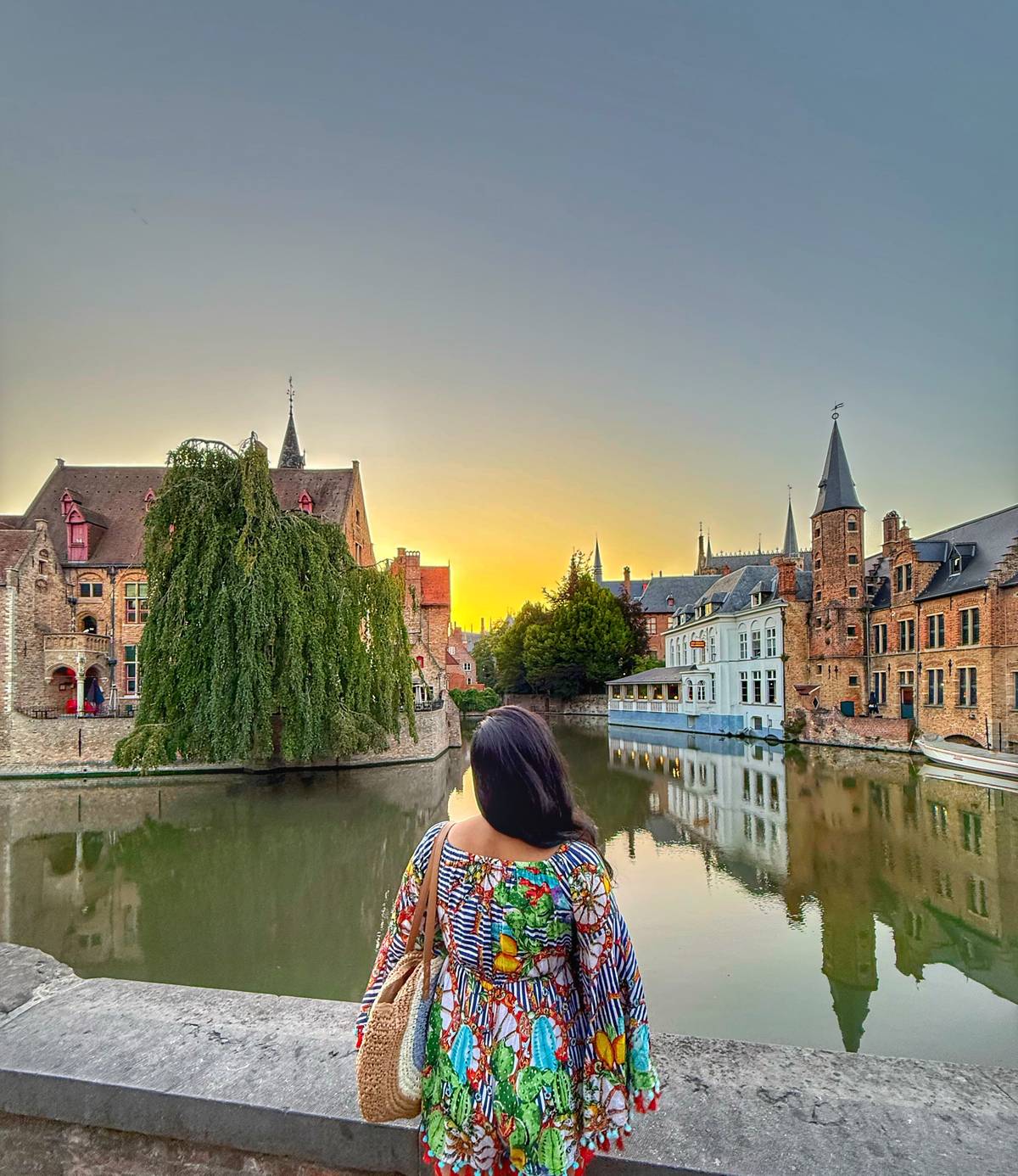 Rosary Quay has been the most popular spot for pictures in Bruges even before the word “Instagrammable” trended! I feasted my eyes on this centuries-old beauty, a spot so pretty at dusk that it looked like a painting. While there are plenty of bars and cafes bustling, there was still a certain sukoon, a calmness too, that was so addictive that I ended up visiting this space every day even if it was for a few minutes. Fun fact for Bolly movie buffs: A part of the song Chaar kadam from PK featuring Anushka Sharma and Sushant Singh Rajput was shot here!
Rosary Quay has been the most popular spot for pictures in Bruges even before the word “Instagrammable” trended! I feasted my eyes on this centuries-old beauty, a spot so pretty at dusk that it looked like a painting. While there are plenty of bars and cafes bustling, there was still a certain sukoon, a calmness too, that was so addictive that I ended up visiting this space every day even if it was for a few minutes. Fun fact for Bolly movie buffs: A part of the song Chaar kadam from PK featuring Anushka Sharma and Sushant Singh Rajput was shot here!
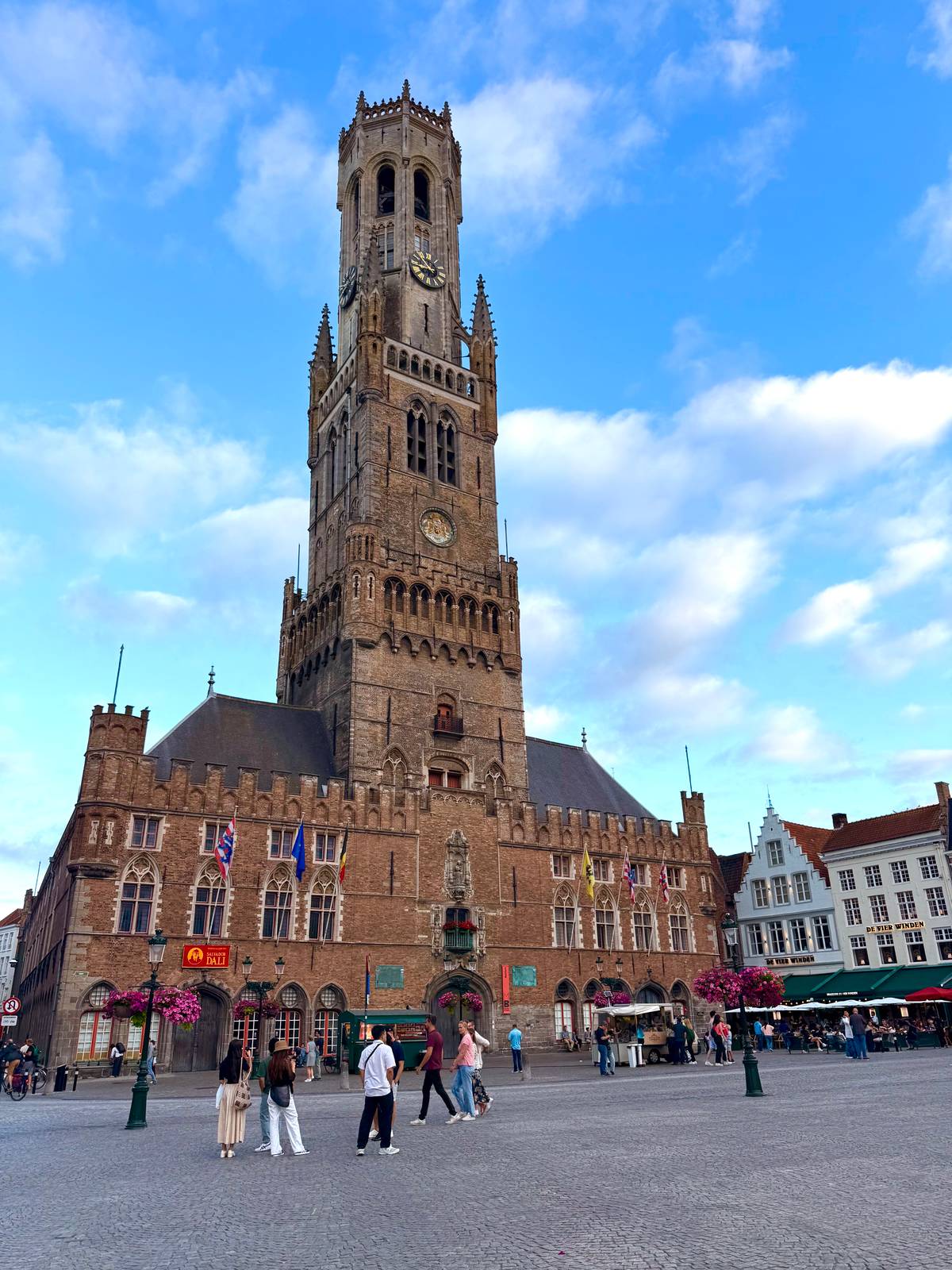 Belfry of Bruges offers a panoramic view but it comes with a price tag and lot of climbing (366 steps to be precise). On your way up, you get to learn about the history of Bruges, see the working of the giant clock, carillon and the bell that rings every 15-minutes!
Belfry of Bruges offers a panoramic view but it comes with a price tag and lot of climbing (366 steps to be precise). On your way up, you get to learn about the history of Bruges, see the working of the giant clock, carillon and the bell that rings every 15-minutes!
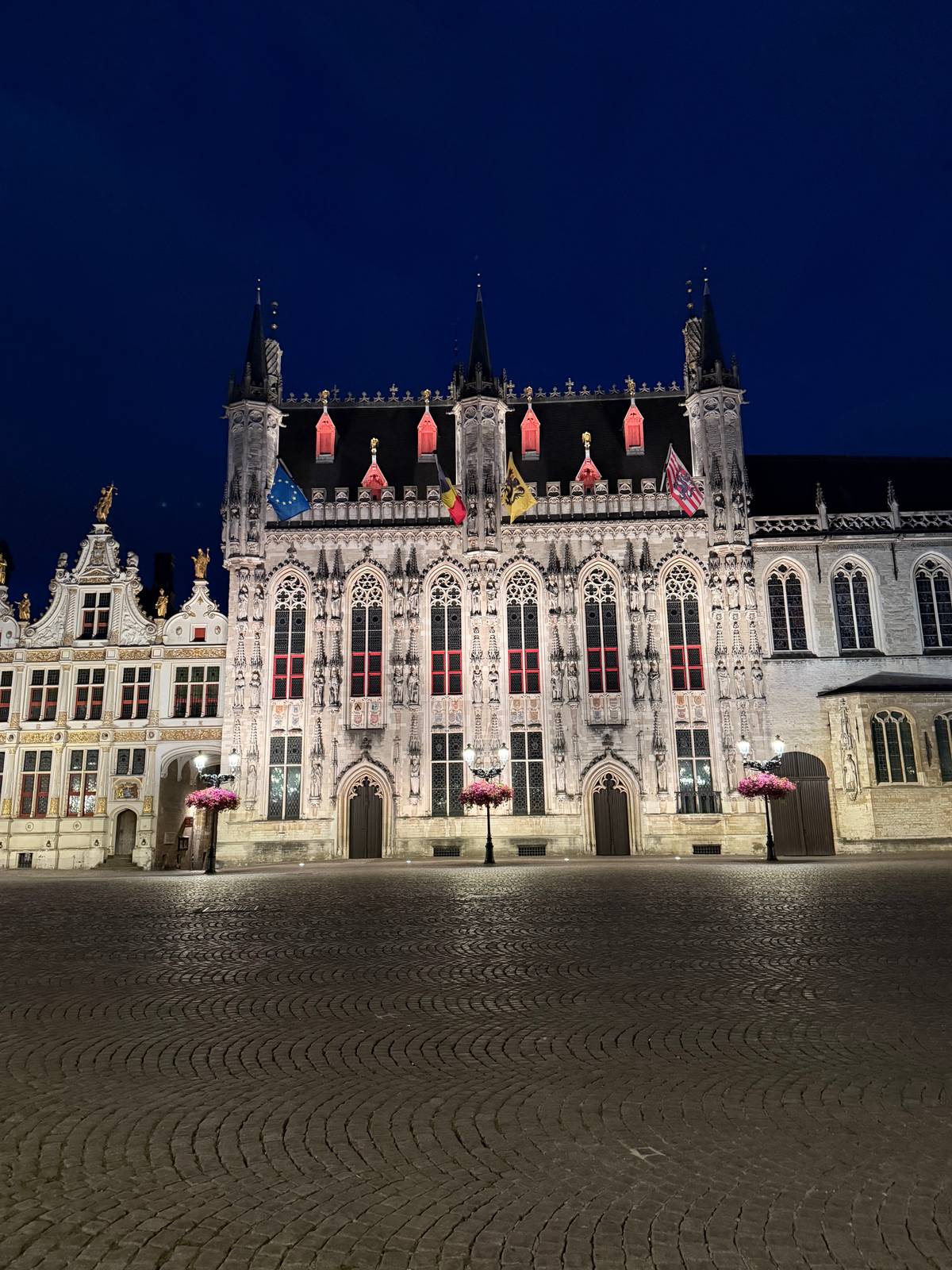
Barely 10mins walk from the Market Square lies Burg Square (above) that has Town Hall and Basilica of the Holy Blood. We decided to go inside the 12th-century church that is believed to contain blood of Jesus Christ. The pretty church has an upper and lower chapel and once we entered the church, a certain divine and spiritual energy hugged us.
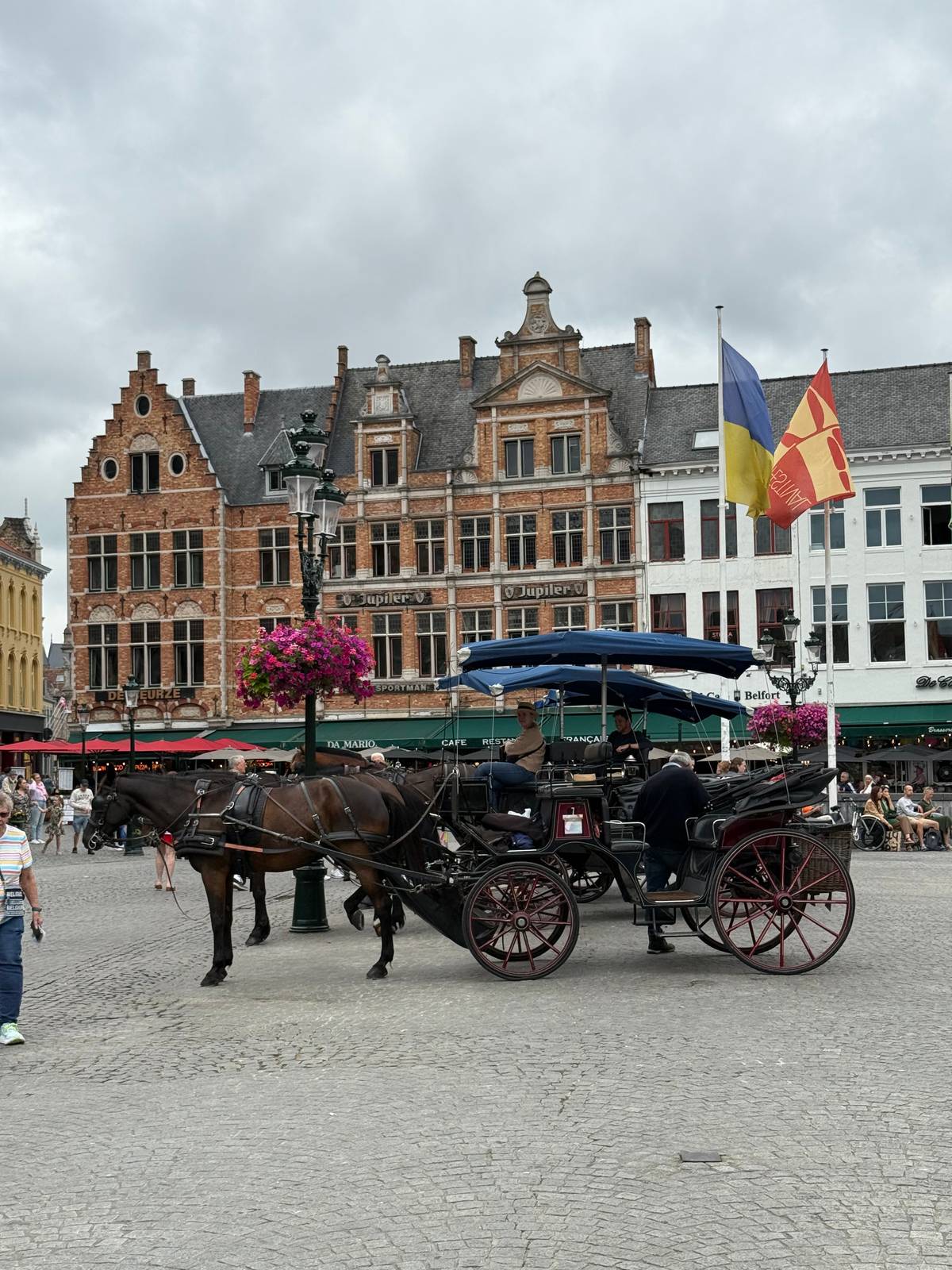 The bustling Grote Markt (Market Square) is located at the centre of Bruges. It is surrounded by a mix of Gothic with Middle Ages-era brickwork houses, series of cafes, tourist spots, horse and carriage stands and souvenir shops and more. If you sit at one of the cafes and pay attention, you would notice, things are moving in “time-lapse” mode…The horse carriages are expensive but an experience that you must indulge in but if you are looking for a more then get on a city tour bus that not only takes you around the place but comes with audio guide too.
The bustling Grote Markt (Market Square) is located at the centre of Bruges. It is surrounded by a mix of Gothic with Middle Ages-era brickwork houses, series of cafes, tourist spots, horse and carriage stands and souvenir shops and more. If you sit at one of the cafes and pay attention, you would notice, things are moving in “time-lapse” mode…The horse carriages are expensive but an experience that you must indulge in but if you are looking for a more then get on a city tour bus that not only takes you around the place but comes with audio guide too.
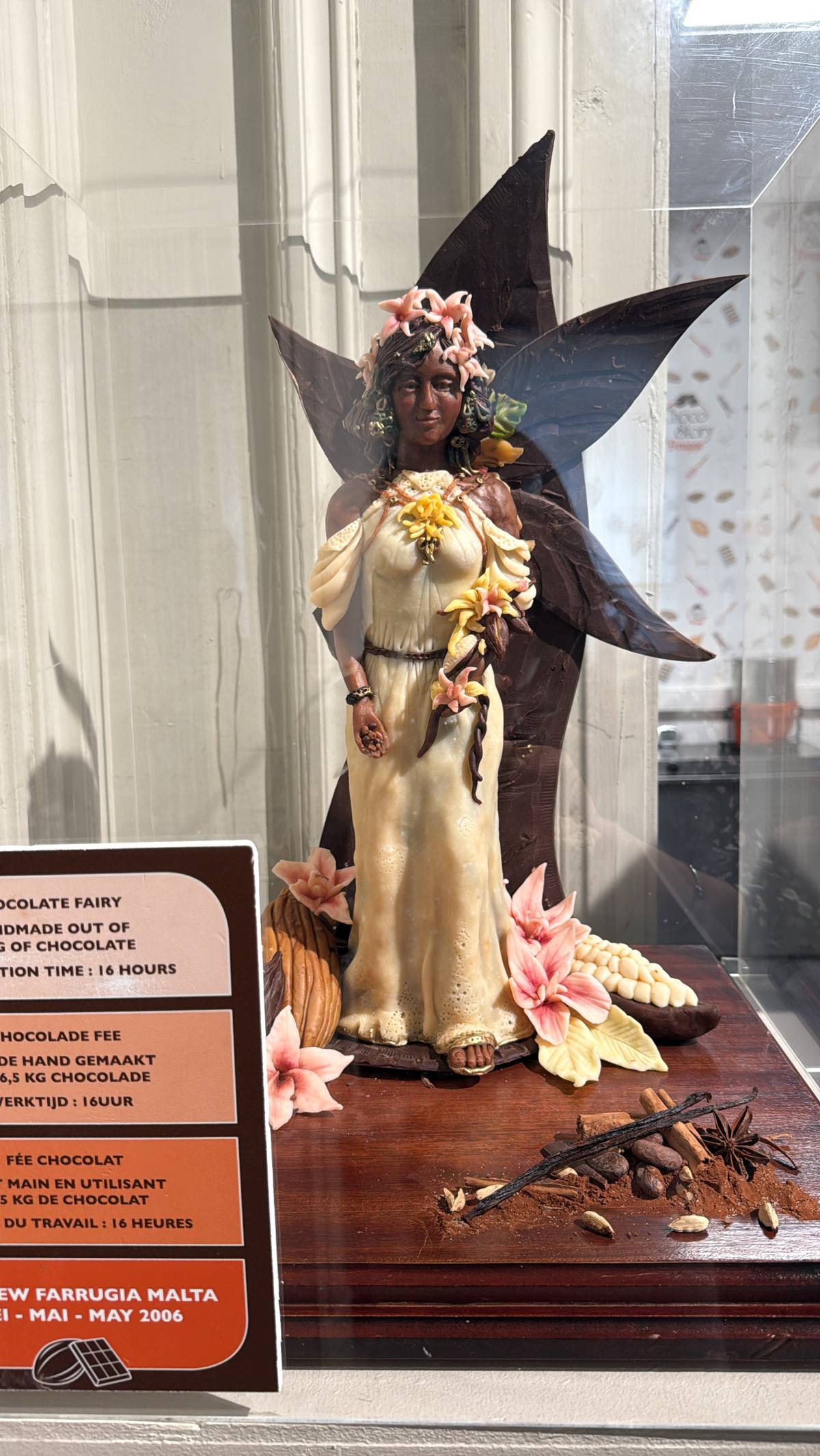 When you are visiting the country known for world famous Belgian chocolates, a visit to the Chocolate Factory seemed natural. You can buy tickets immediately or online and step inside the word of chocolates — from its history to cocoa to packaging, exporting and influences of various countries, the experience was too much fun. The best part of the entire experience was saved for the last when it concluded with chocolate tasting which we overdosed on, without regrets! This section also had figures of fairies, cartoon characters to other fictional characters made completely with different kinds of chocolates which was simply breathtaking and work of art.
When you are visiting the country known for world famous Belgian chocolates, a visit to the Chocolate Factory seemed natural. You can buy tickets immediately or online and step inside the word of chocolates — from its history to cocoa to packaging, exporting and influences of various countries, the experience was too much fun. The best part of the entire experience was saved for the last when it concluded with chocolate tasting which we overdosed on, without regrets! This section also had figures of fairies, cartoon characters to other fictional characters made completely with different kinds of chocolates which was simply breathtaking and work of art.
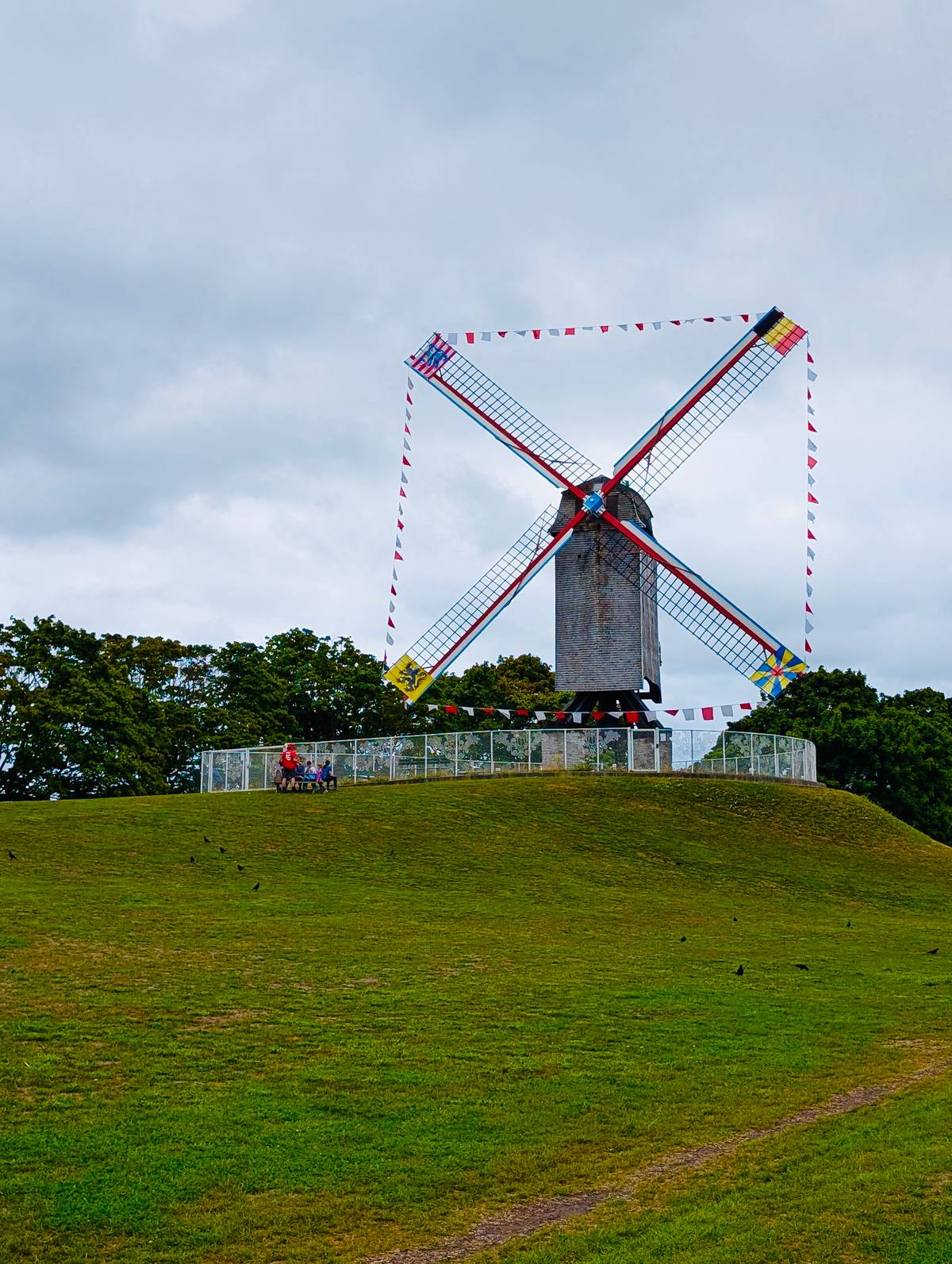 While most prefer hanging out near Grote Markt or Burg square, we went to explore the Windmills of Bruges that dotted the city’s borders. Surrounded by lush greenery, presently there are four windmills that trace their roots to the 13th century.
While most prefer hanging out near Grote Markt or Burg square, we went to explore the Windmills of Bruges that dotted the city’s borders. Surrounded by lush greenery, presently there are four windmills that trace their roots to the 13th century.
Ghent
Our third stop was Ghent, also spelt Gent, that lies between Bruges and Brussels. While many prefer day trips to Ghent from Brussels, we decided to explore this medieval masterpiece for two days. “Most roads are closed due to Gentse Feesten, I will drop you off nearby,” said our Uber driver, that instantly made us Google and find out that he is talking about a 10-day festival with concerts, street theatre and more that takes place from July 17-26. As we got off the cab and pulled our luggage, we saw men and women in costumes taking part in a parade, drinking, dancing and singing. Right outside our hotel, there were artistes singing or playing various instruments while there were stages brimming with people. Some of the performances even went on till morning and the youthful energy of Ghent was unmissabe! Basically, we had landed ourselves into another music festival and we weren’t complaining! In-between dancing and exploring local music, we strolled along the Graslei and Korenlei, explored Castle of the Counts, checked out buzzing cafes, dived into some Flemish classic dishes and admired street art tucked in hidden alleys… in short, Ghent was a feast for our eyes and ears.
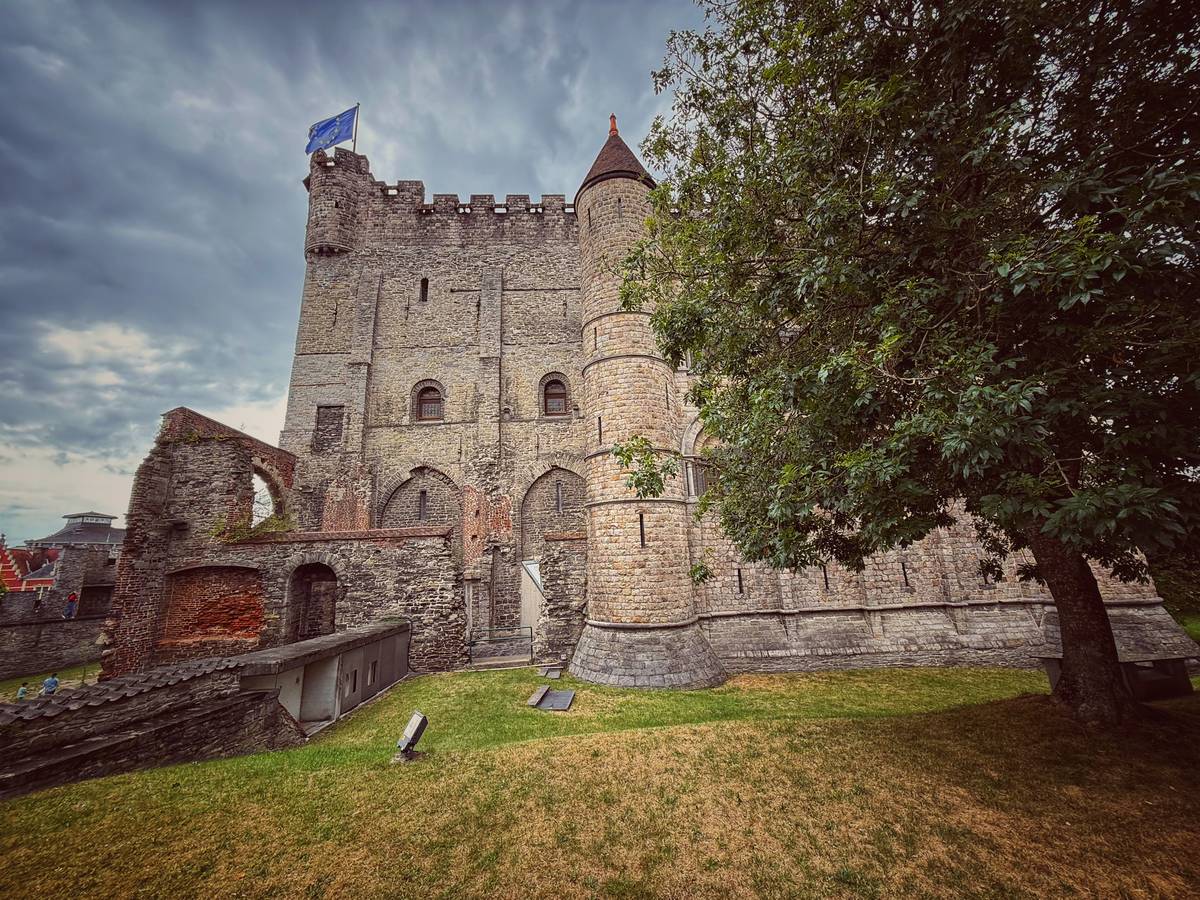 The city steeped in history, boasts of tall medieval buildings with a some notable contemporary designs. But one of the architectures that stands out and has stood the test of time is Gravensteen Castle that translates to Castle of the Counts. Built by Count Philip of Alsace, the 12th-century fortress used to serve as a residence for the Counts of Flanders and now tourists can visit the castle by either buying tickets online or at the entrance. We took the audio guide that beautifully described the history of the castle as we climbed up and down some really steep and winding stone stairs but the view from the top of the castle was majestic, just like the castle itself.
The city steeped in history, boasts of tall medieval buildings with a some notable contemporary designs. But one of the architectures that stands out and has stood the test of time is Gravensteen Castle that translates to Castle of the Counts. Built by Count Philip of Alsace, the 12th-century fortress used to serve as a residence for the Counts of Flanders and now tourists can visit the castle by either buying tickets online or at the entrance. We took the audio guide that beautifully described the history of the castle as we climbed up and down some really steep and winding stone stairs but the view from the top of the castle was majestic, just like the castle itself.
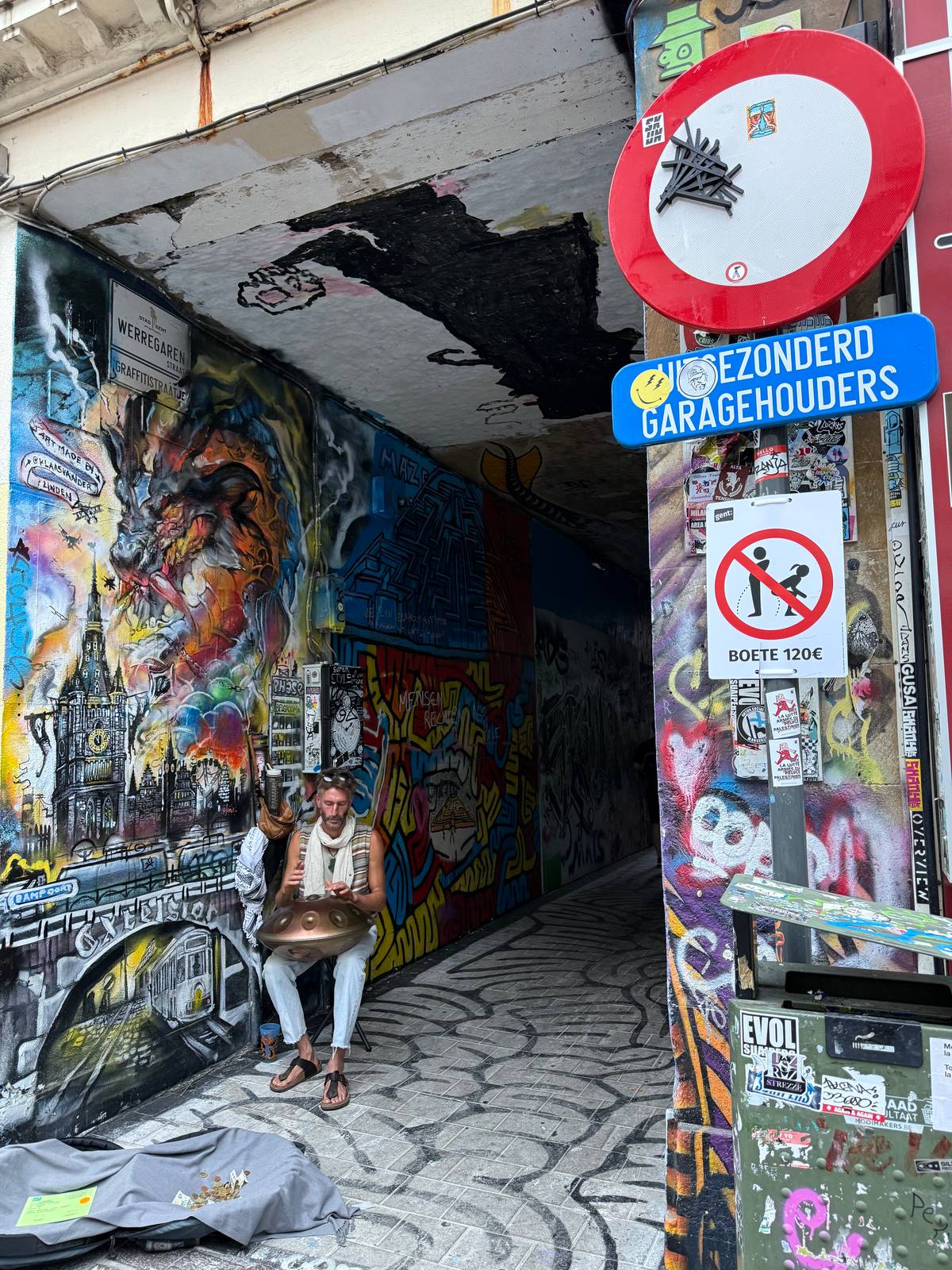
One of the best things about Ghent is, you can explore most landmarks on foot. During an evening stroll I checked out the vibrant Graffiti Alley. Located between Hoogport and Onderstraat, this alley had artists showing off their creativity on the walls while tourists like me, simply stood there in awe. The riot of colours added to the energy of the alley.
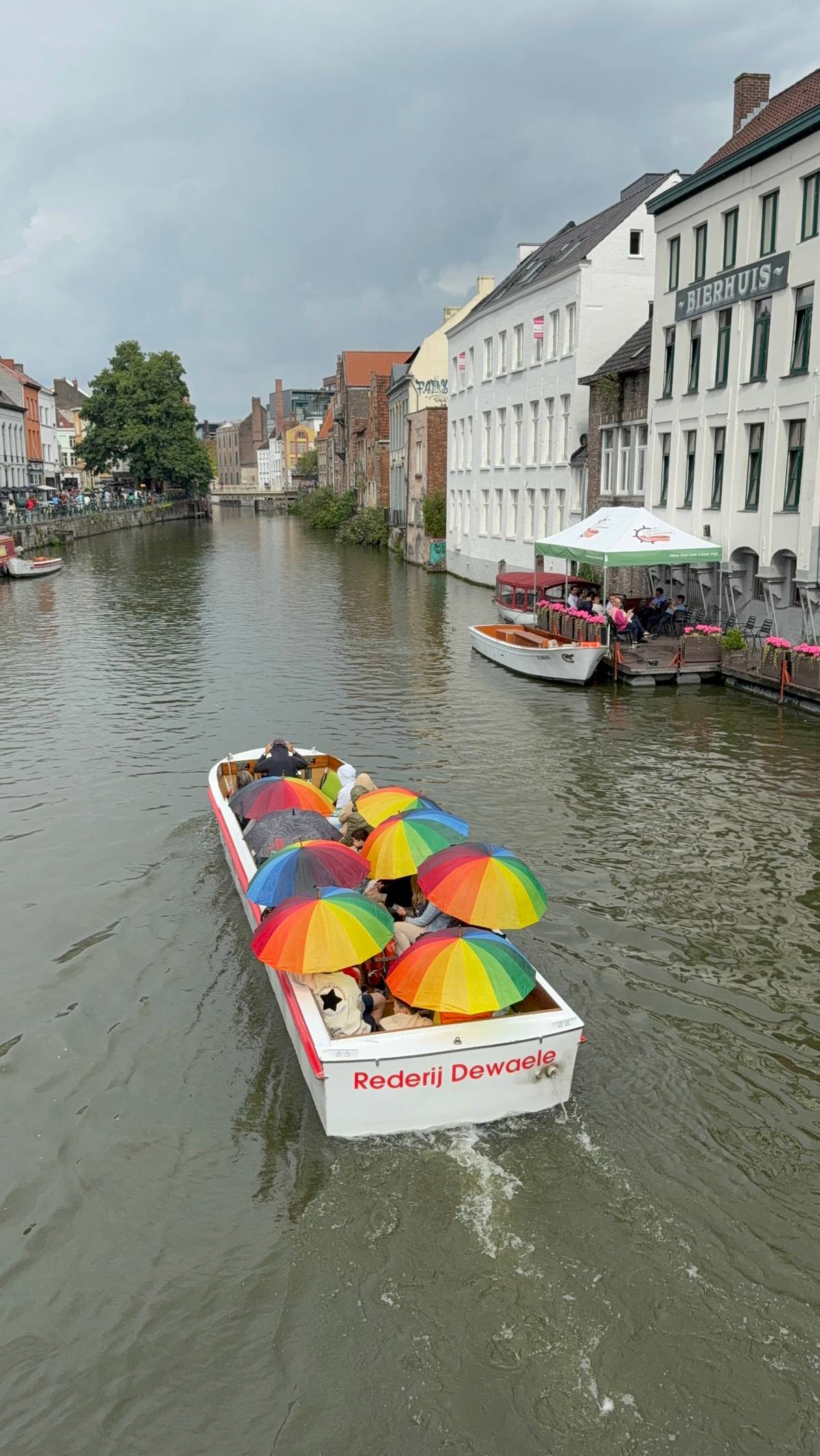 One of the best ways to explore a relaxed trip of the castles at Ghent is via a boat ride. Canal Cruise tickets can be brought at several departure points near popular spots like Graslei/Korenlei or Gravensteen Castle. If you want to save money, we suggest grabbing a place near the canal with fries, beer is a good option too. There are plenty of restaurants, bars and art galleries near the canals to explore.
One of the best ways to explore a relaxed trip of the castles at Ghent is via a boat ride. Canal Cruise tickets can be brought at several departure points near popular spots like Graslei/Korenlei or Gravensteen Castle. If you want to save money, we suggest grabbing a place near the canal with fries, beer is a good option too. There are plenty of restaurants, bars and art galleries near the canals to explore.
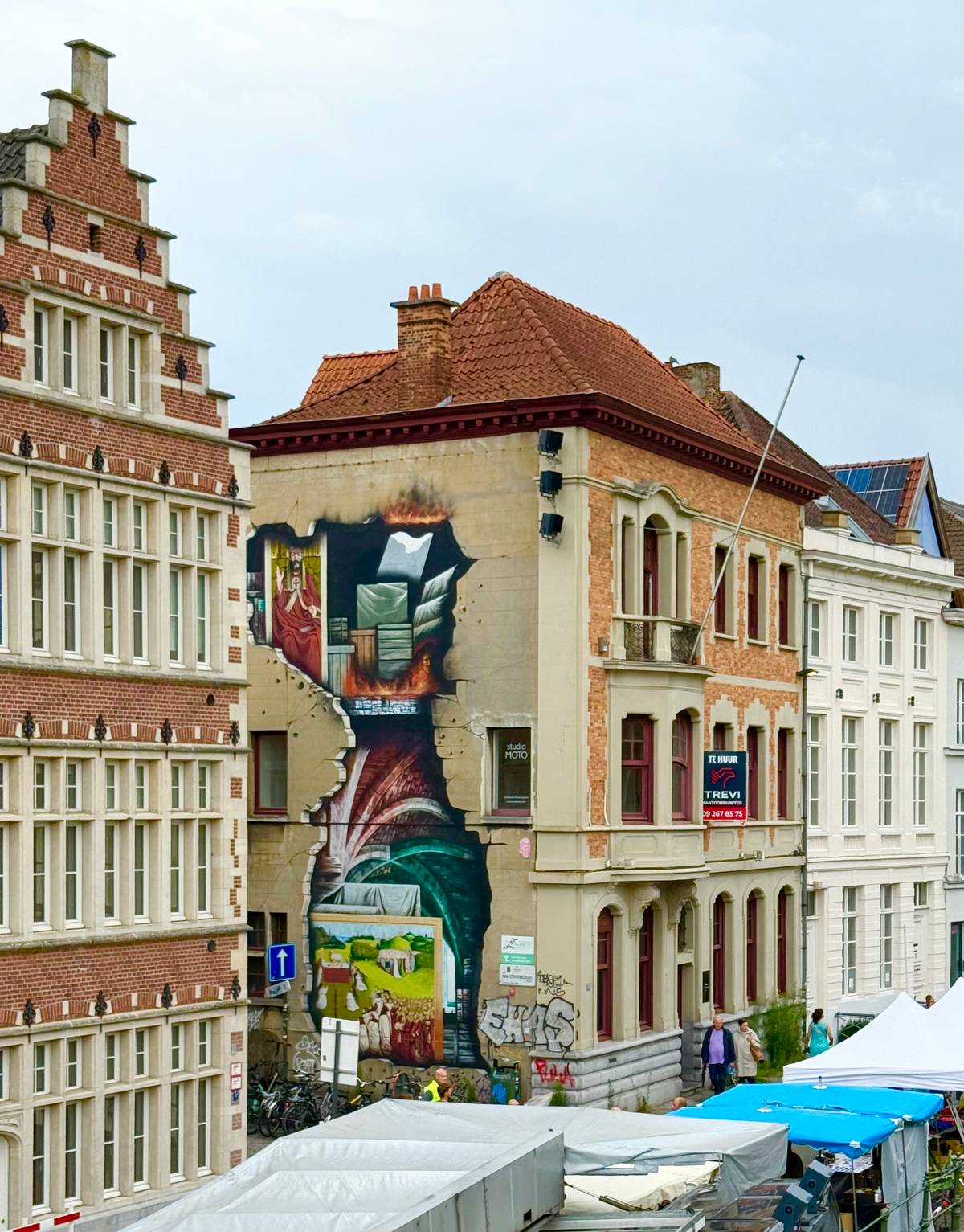 Ghent is a great place to admire art — especially if you are a fan of modern art. The Municipal Museum of Contemporary Art in Ghent or SMAK has an international reputation for having a contemporary art collection ranging from painting, sculptures to pictures. That aside you may come across a lot of abstract painting on buildings (above) throughout the port city in northwest Belgium.
Ghent is a great place to admire art — especially if you are a fan of modern art. The Municipal Museum of Contemporary Art in Ghent or SMAK has an international reputation for having a contemporary art collection ranging from painting, sculptures to pictures. That aside you may come across a lot of abstract painting on buildings (above) throughout the port city in northwest Belgium.
Brussels
Our last city in Belgium was Brussels, that welcomed us with good weather. During our stay we explored Grand Place, the quirky charm of Mannekin Pis, explored art and binged on yummy food (think pralines, more waffles and golden fries) and chugged local beers. The city thrives on contrast — architecture to F&B — and every corner had a new story and rhythm to share.
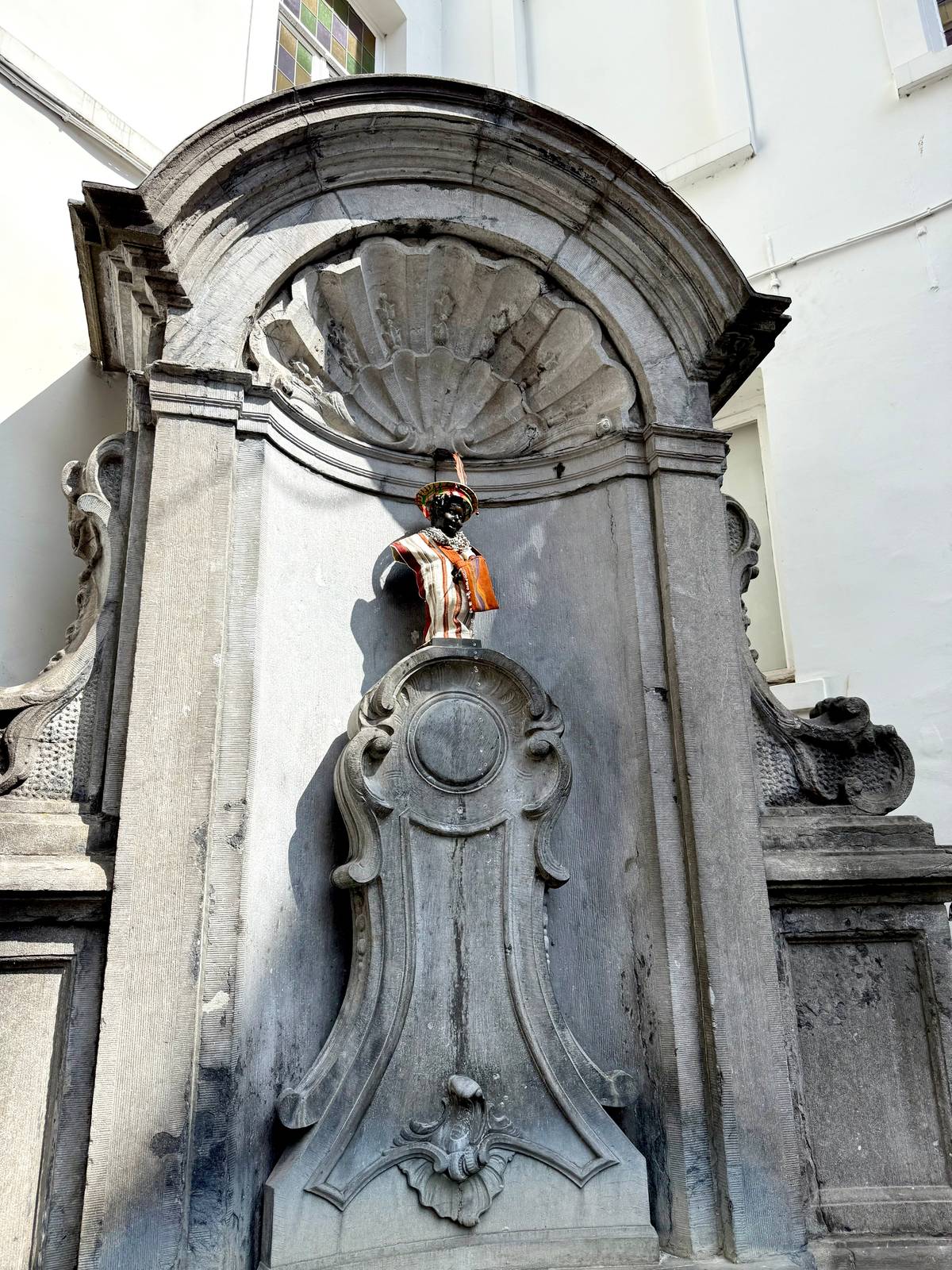 By the time we landed in Brussels, it was way past 3pm. So, post check-in, we decided to visit the famous Manneken Pis that was five minutes away from our hotel. At first glance I couldn’t understand the hype around the famous spot. Wasn’t it just a little boy peeing? But I was soon filled in with a much deeper information that explained how it had a huge cultural punch. Standing at about 61cm, he is one of the most loved symbols that embodies Belgium’s rebellious spirit, playful and sense of humour. Some say that the little boy saved the city by extinguishing a burning fuse by peeing while some said it represents the mischievous defiance of the people of Brussels. We were also told that we were lucky to see him dressed up because the tiny statue owns more than 1,000 costumes that comprises sporty to royal outfits. How cool!
By the time we landed in Brussels, it was way past 3pm. So, post check-in, we decided to visit the famous Manneken Pis that was five minutes away from our hotel. At first glance I couldn’t understand the hype around the famous spot. Wasn’t it just a little boy peeing? But I was soon filled in with a much deeper information that explained how it had a huge cultural punch. Standing at about 61cm, he is one of the most loved symbols that embodies Belgium’s rebellious spirit, playful and sense of humour. Some say that the little boy saved the city by extinguishing a burning fuse by peeing while some said it represents the mischievous defiance of the people of Brussels. We were also told that we were lucky to see him dressed up because the tiny statue owns more than 1,000 costumes that comprises sporty to royal outfits. How cool!
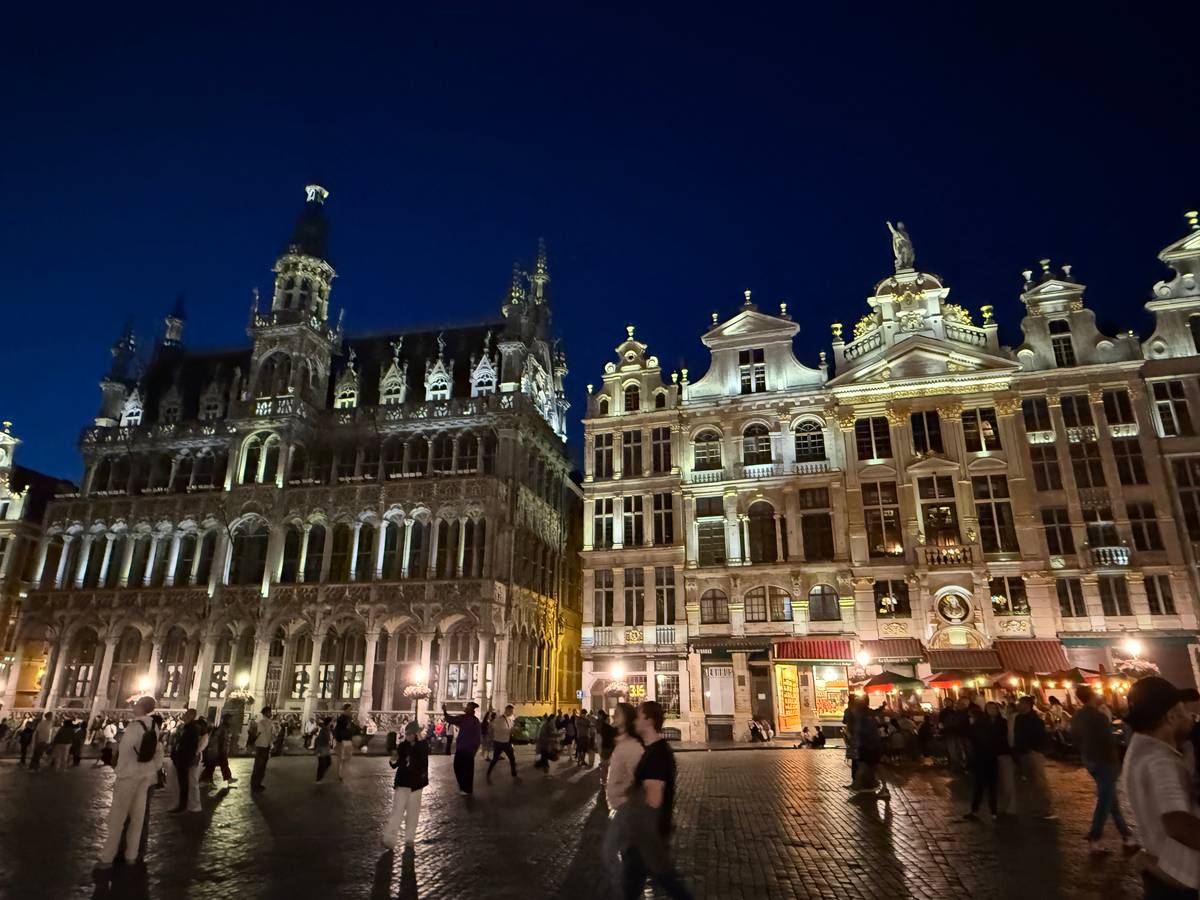 The Grand Place in Brussels was located right behind our hotel, which meant we would cross it every time we stepped out or returned to our accommodation. Having seen the place during day and night, I perosnally felt it looks more majestic at night when it’s lit up. Enclosed by a perfect square of opulent guildhalls, the Town Hall and King’s House, I immersed myself in the sheer royalty where every facade is a piece of art adorned by ornate and intricate carvings and this at night looked like a jewel box — glowing and glimmering as the square filled with music and chatter.
The Grand Place in Brussels was located right behind our hotel, which meant we would cross it every time we stepped out or returned to our accommodation. Having seen the place during day and night, I perosnally felt it looks more majestic at night when it’s lit up. Enclosed by a perfect square of opulent guildhalls, the Town Hall and King’s House, I immersed myself in the sheer royalty where every facade is a piece of art adorned by ornate and intricate carvings and this at night looked like a jewel box — glowing and glimmering as the square filled with music and chatter.
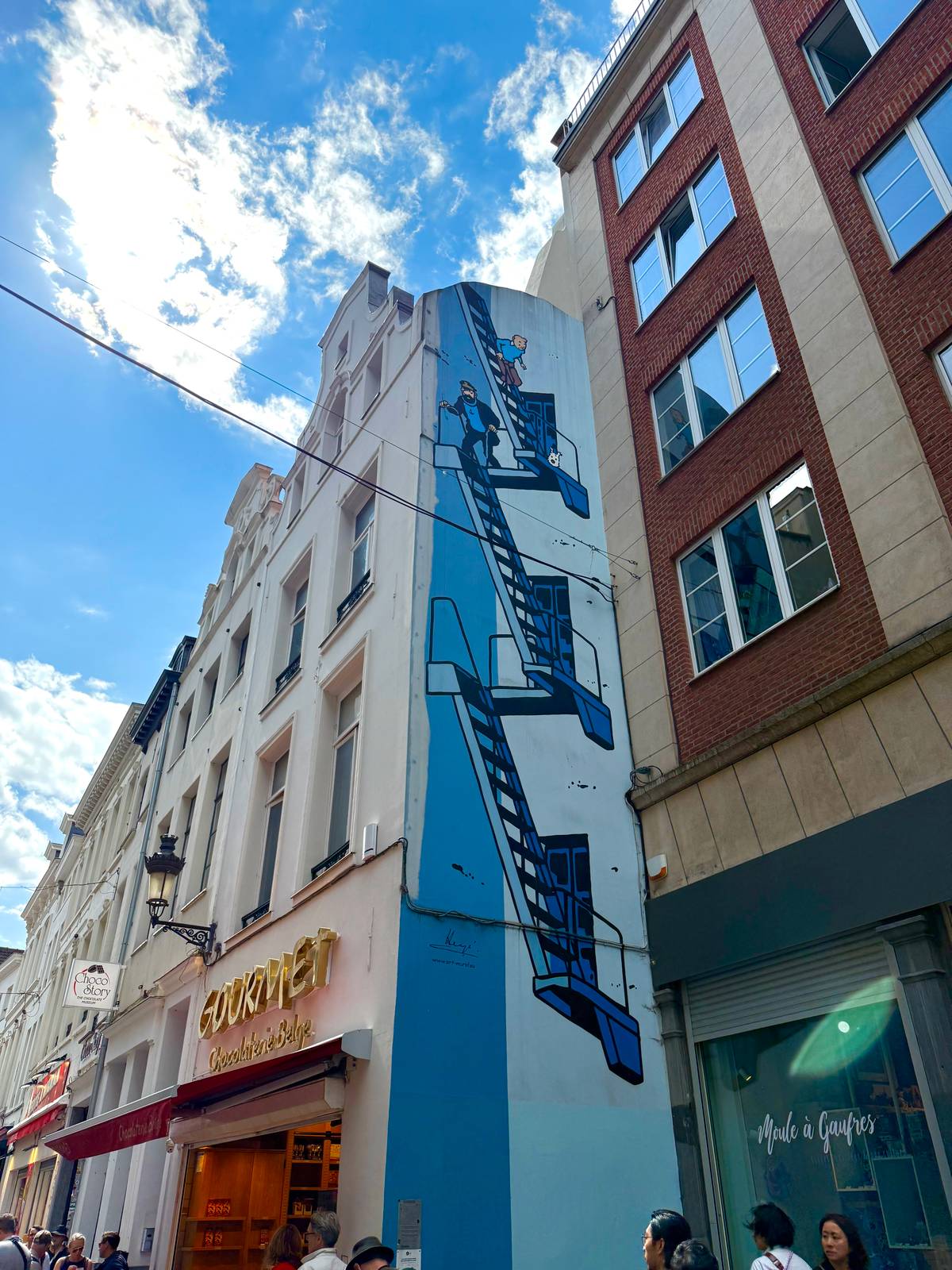 Like Ghent, the streets of Brussels are filled with countless art — some are often veritable murals with the artists exhibiting in galleries while others are done by Belgians or international artists who have decorated the walls of buildings, metros, stations and even tunnels. Located on 37 Rue de l’Etuve, we spotted Tintin, the famous fictional Belgian reporter’s mural along with Captain Haddock which is from The Calculus Affair set in the tense climate of the Cold War.
Like Ghent, the streets of Brussels are filled with countless art — some are often veritable murals with the artists exhibiting in galleries while others are done by Belgians or international artists who have decorated the walls of buildings, metros, stations and even tunnels. Located on 37 Rue de l’Etuve, we spotted Tintin, the famous fictional Belgian reporter’s mural along with Captain Haddock which is from The Calculus Affair set in the tense climate of the Cold War.
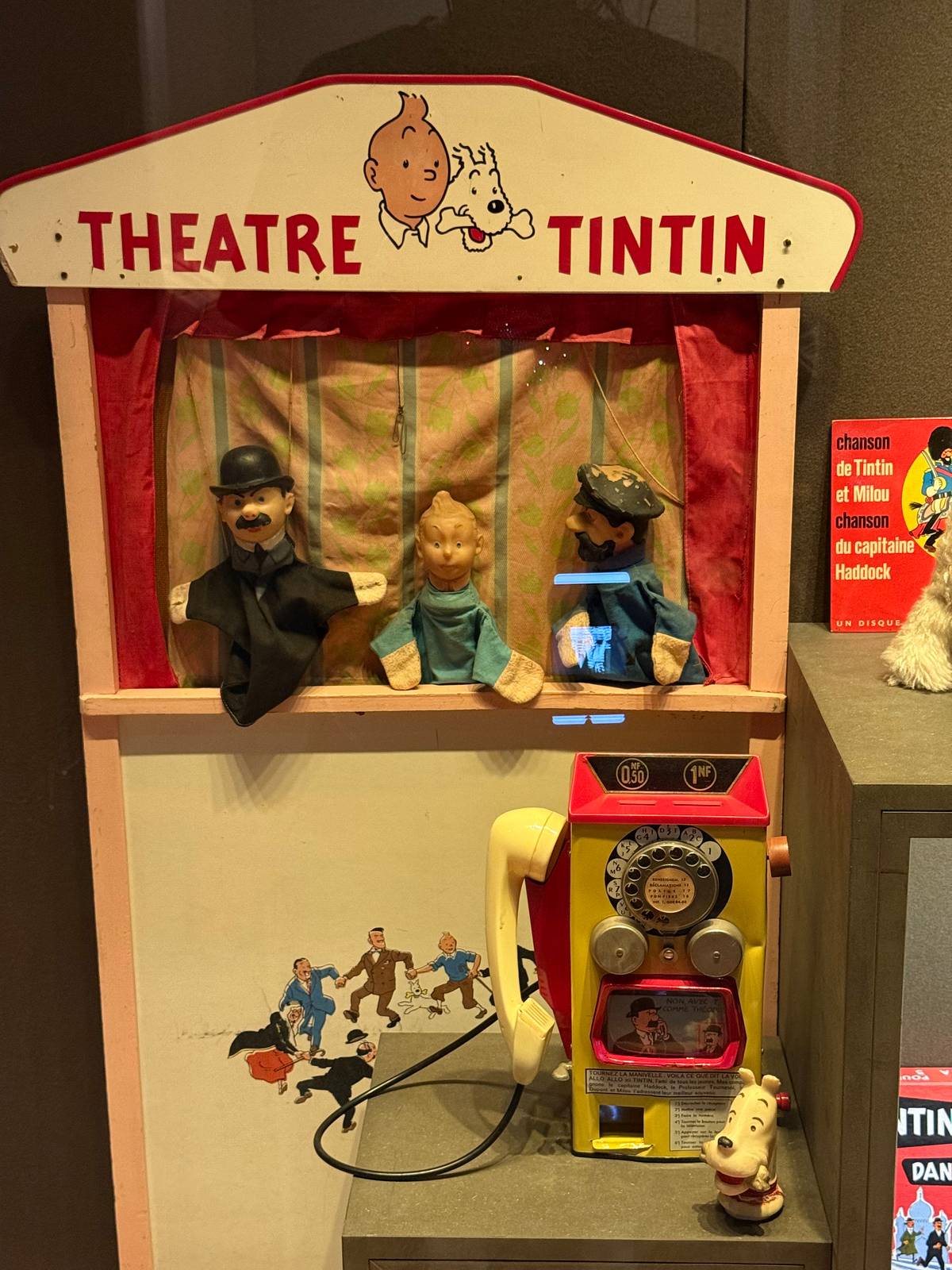
Being ardent fan of Tintin comics, the Hergé Museum was definitely on our bucket list. From Brussels station, we took a train to Louvain-la-Neuve and after a five-minutes walk, we reached the destination that pays tribute to Georges Remi (better known as Herge) — the man who brought The Adventures of Tintin to life. The museum gives a deep insight of how Tintin and the characters were created, the first sketches and personal items. There are eight immersive sections that we explored for around four-five hours with the help of audio tours. The building designed by architect Christian de Portzamparc is striking with facilities of lockers, cafe and even retail shops.
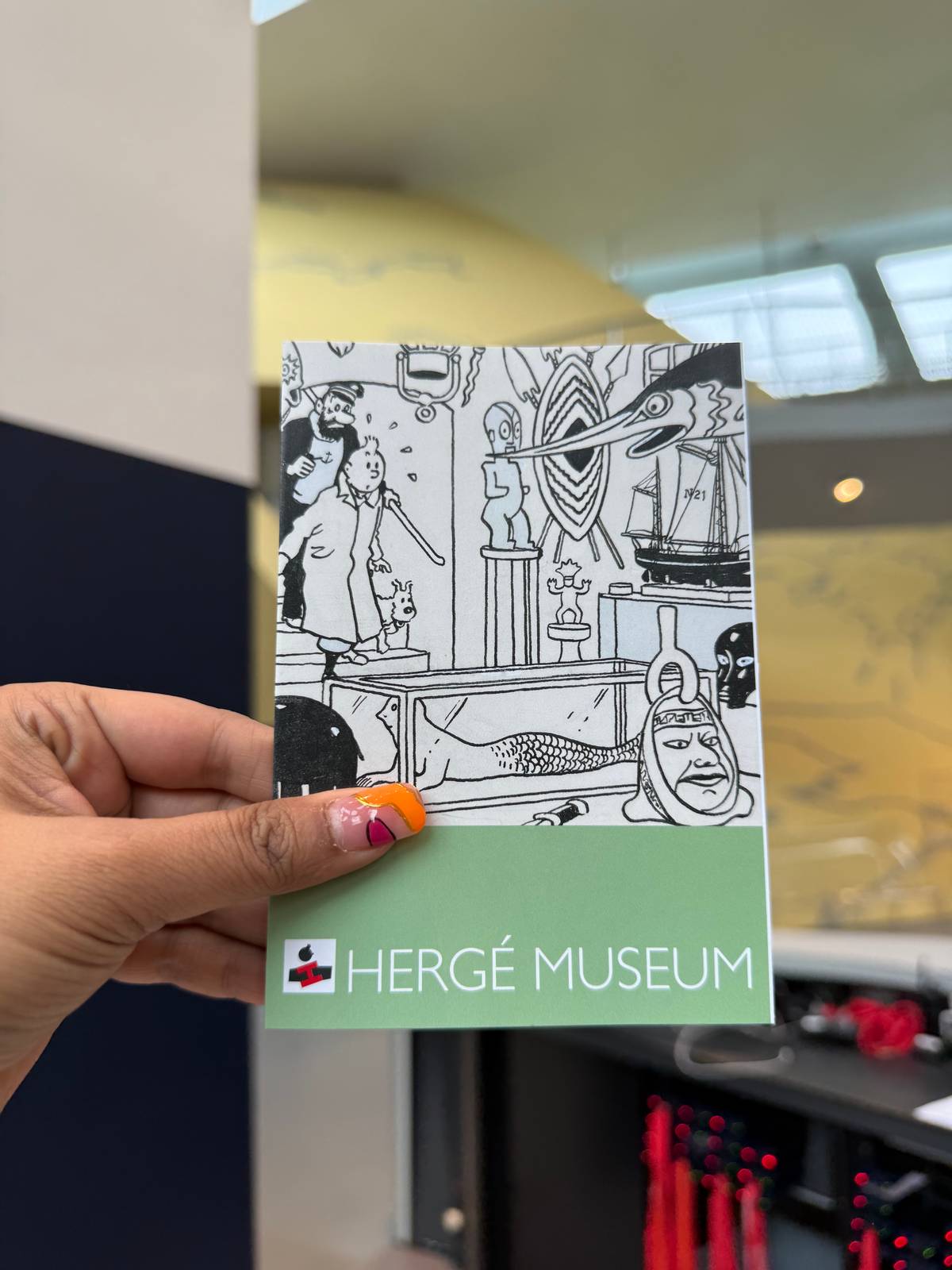 “Are you a journalist?” I was asked at the billing section inside the Herge Museum. Puzzled, I said “yes”. “Great, your entry is free!” said the staff. Thrilled with the unexpected free entry, I headed to explore the museum with a spring in my step.
“Are you a journalist?” I was asked at the billing section inside the Herge Museum. Puzzled, I said “yes”. “Great, your entry is free!” said the staff. Thrilled with the unexpected free entry, I headed to explore the museum with a spring in my step.
P.S. You need to present your press card to avail the privilege and luckily I was carrying mine with me.
FOOD IN BELGIUM:
I was told Belgian food is all about fries and waffles. True that but that was not the only dishes I had and loved. While I started the experience with crispy golden fries with various dips, I moved on to moules-frites — succulent mussels simmered in garlic, white, butter and herbs, Waterzooi with chicken, a creamy dish that also came with a portion of fries, Lapin à la Kriek — a traditional rabbit dish cooked in a sauce with a sour cherry lambic beer. For dessert, it was all about trying various kinds of waffles… waffles on flick, with ice cream, with fruits… the options were endless.
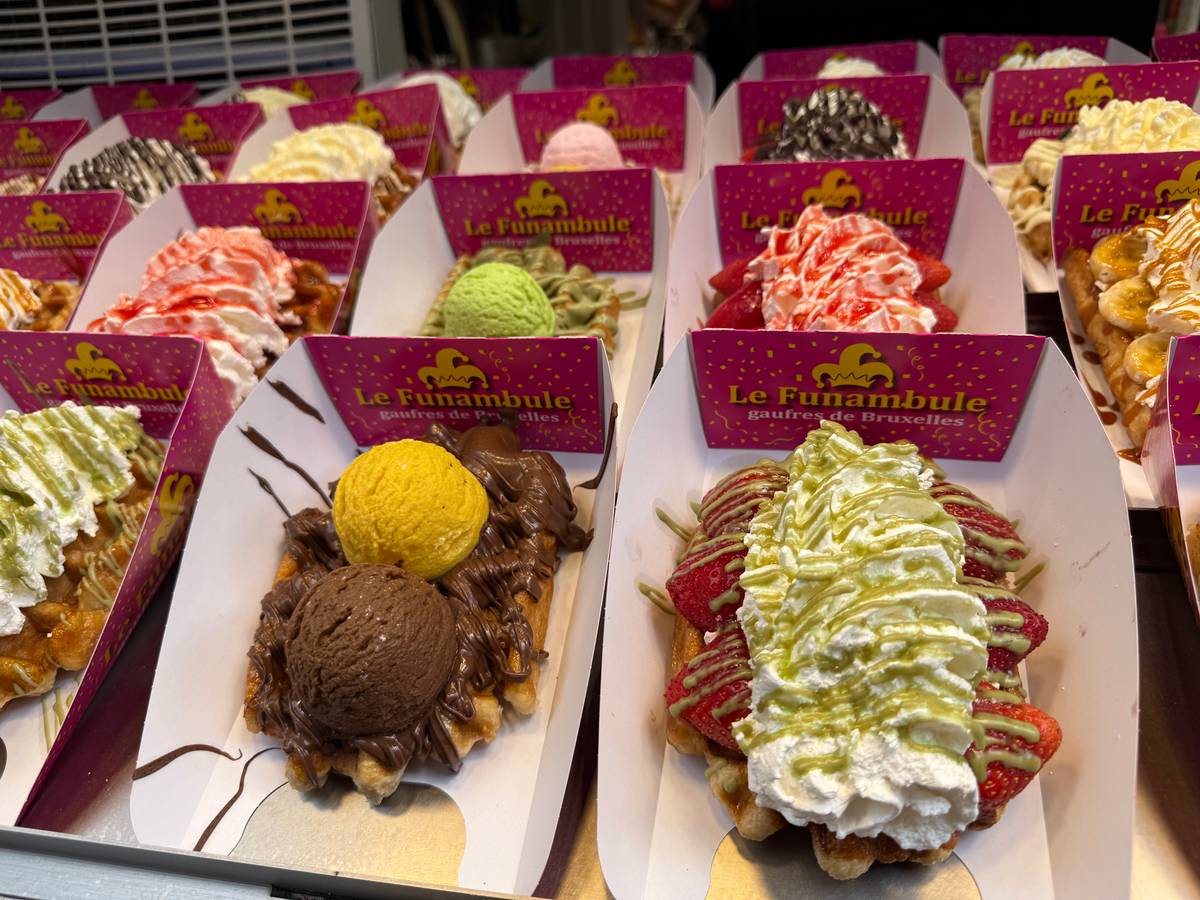 Belgian Waffles
Belgian Waffles
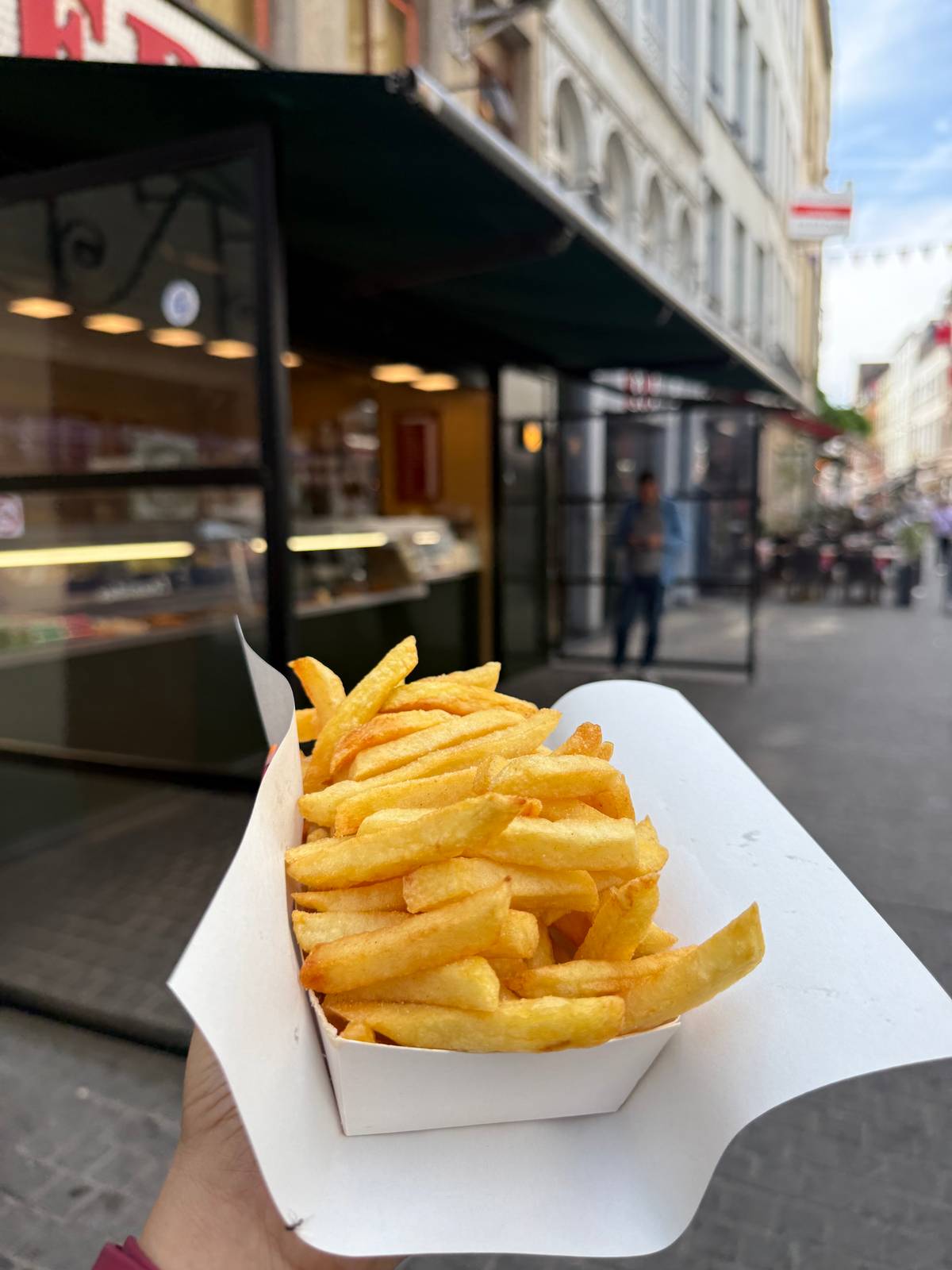 Frites
Frites
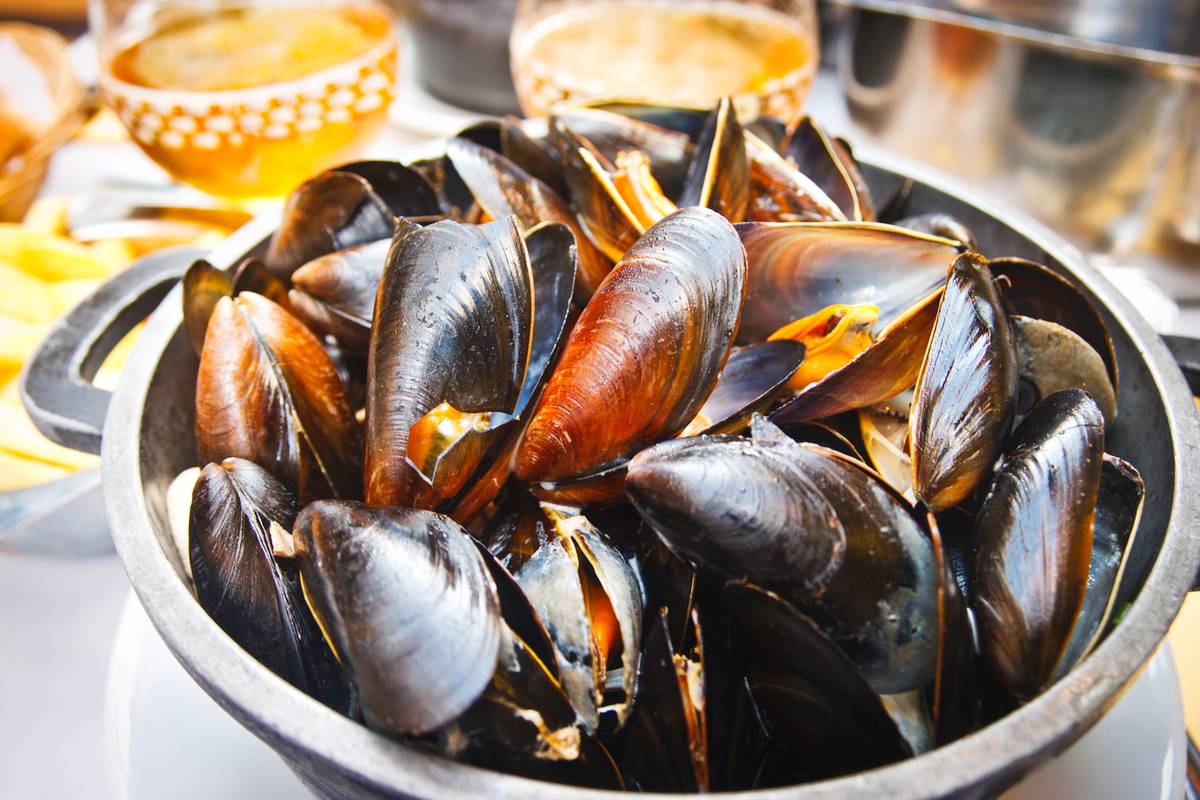 Moules-frites and Belgian beer
Moules-frites and Belgian beer
Pictures: The writer and istock
!function(f,b,e,v,n,t,s)
{if(f.fbq)return;n=f.fbq=function(){n.callMethod?
n.callMethod.apply(n,arguments):n.queue.push(arguments)};
if(!f._fbq)f._fbq=n;n.push=n;n.loaded=!0;n.version=’2.0′;
n.queue=[];t=b.createElement(e);t.async=!0;
t.src=v;s=b.getElementsByTagName(e)[0];
s.parentNode.insertBefore(t,s)}(window, document,’script’,
‘https://connect.facebook.net/en_US/fbevents.js’);
fbq(‘init’, ‘877586283401283’);
fbq(‘track’, ‘PageView’);
